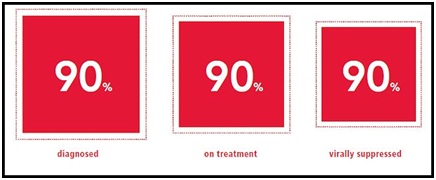
Viral Load test for People Living with HIV/AIDS
.
Why is it in news?
- J P Nadda, Union Minister of Health and Family Welfare launched the ‘‘Viral Load testing for all People Living with HIV/AIDS (PLHIV).
Details
- The initiative will provide free of cost viral load testing for 12 lakh PLHIV on treatment in the country at least once a year.
- After ‘Treat All’, Viral Load test is a big step forward in treating and monitoring people living with HIV.
- The Viral Load test is of immense importance to monitor the effectiveness of treatment of patients taking lifelong Antiretroviral Therapy.
- The routine viral load testing will optimize the utilization of 1stline regimens, thus preventing drug resistance and ensuring the longevity of people living with HIV. “Viral Load testing will empower medical officers at ART to detect failure on first line treatment early and therefore save PLHIV from developing resistance to drugs. It will also help in strengthening ‘Mission Sampark’ in tracking LFU (Loss to Follow Up) PLHIV.
- The National Guidelines for HIV-1 Viral Load Laboratory Testing, National Operational Guidelines for Viral Load Testing, Standard Operating Procedure for HIV-1 Quant Assay with CBNAAT and Guidelines on Quality Monitoring System for Outsourced Viral Load Tests were also launched along with Viral Load Testing.
- In 2017, India revised the Antiretroviral Therapy (ART) treatment protocols to initiate all PLHIV on ART "Treat All".
- The ‘Treat All’ initiative was started to ensure that treatment is started early and the virus transmission is curtailed both at the individual and the community level. Now about 12 lakh PLHIV are availing the benefit of free treatment from more than 530 ART centres.
- To facilitate reduction in stigma and discrimination, recently, the long pending HIV/AIDS Act has been passed. The key provisions of HIV/AIDS Bill are prohibition of discrimination, informed consent, non-disclosure of HIV status, anti-retroviral therapy & opportunistic infection management, protection of property of affected children, safe working environment and appointment of ombudsman in every State. Very few countries globally have such a law to protect rights of people infected with HIV

Conclusion
- India is committed to achieving the global 90-90-90 target by 2020 set by UNAIDS.
- The 90-90-90 target states that, by 2020, 90% of all people living with HIV will know their HIV status. By 2020, 90% of all people with diagnosed HIV infection will receive sustained antiretroviral therapy. By 2020, 90% of all people receiving antiretroviral therapy will have viral suppression.
- The launch of Viral Load Testing, along with other positive measures taken, such as the HIV/AIDS bill, will constructively help India achieve the global 90-90-90 goal. However, these efforts must be vigorously pursued in order to fully achieve the desired results.

Source
PIB

